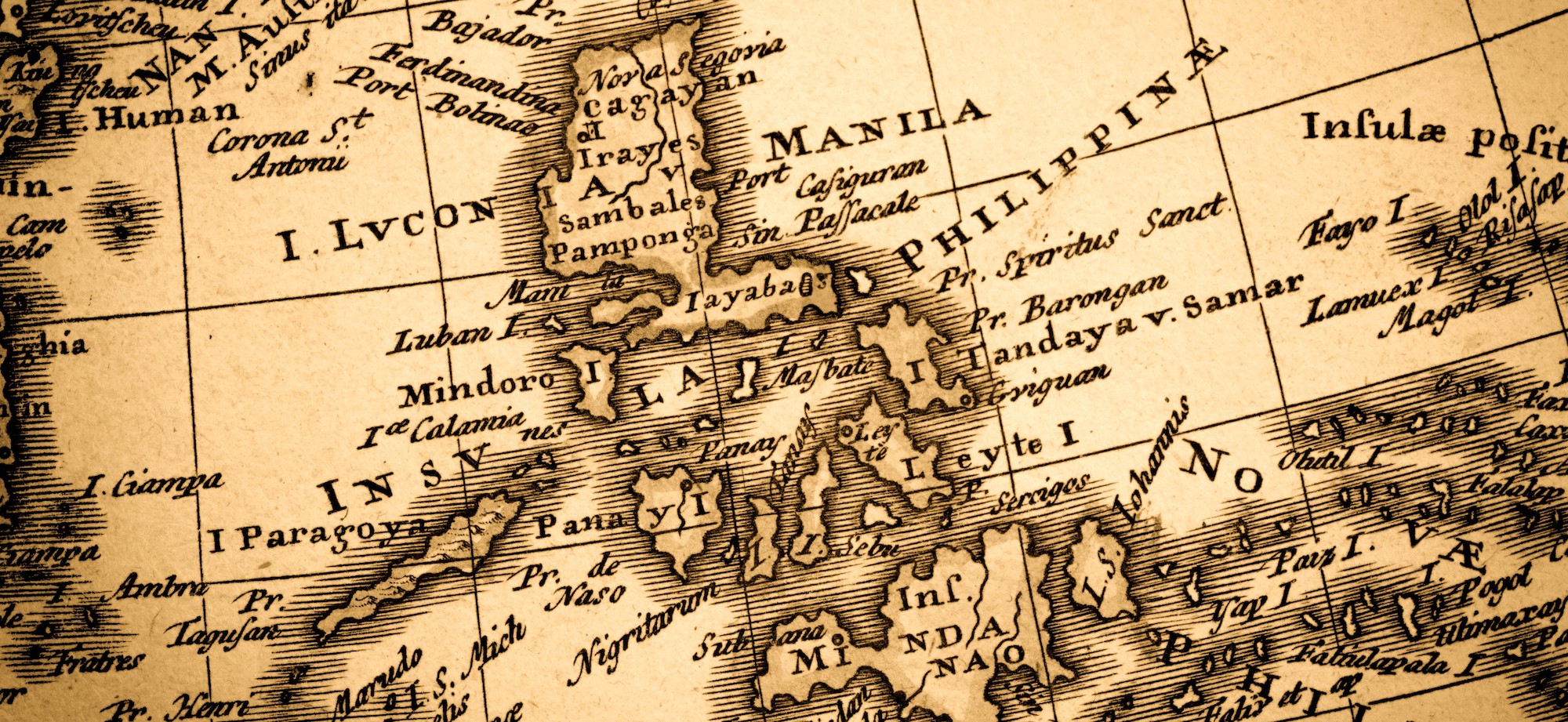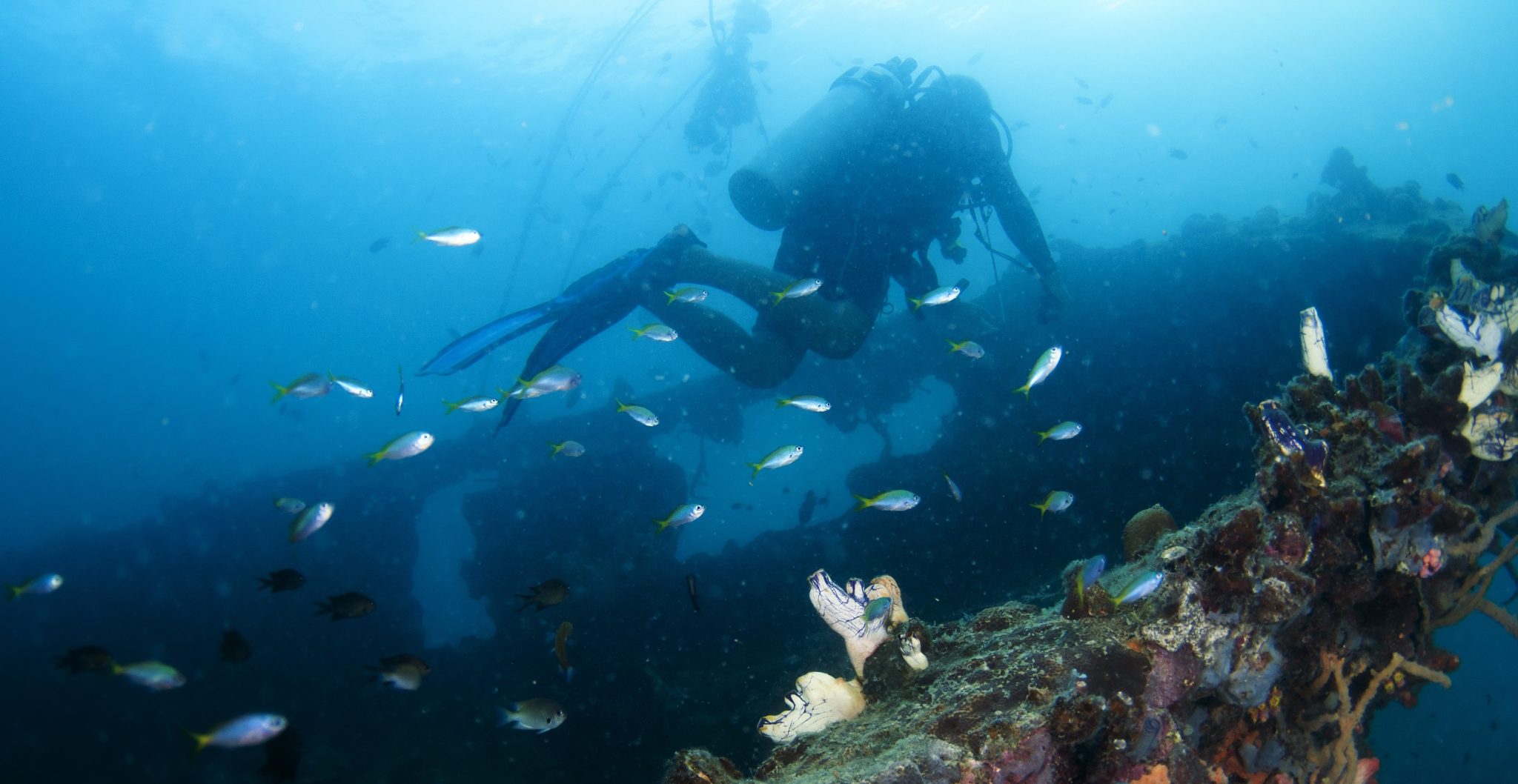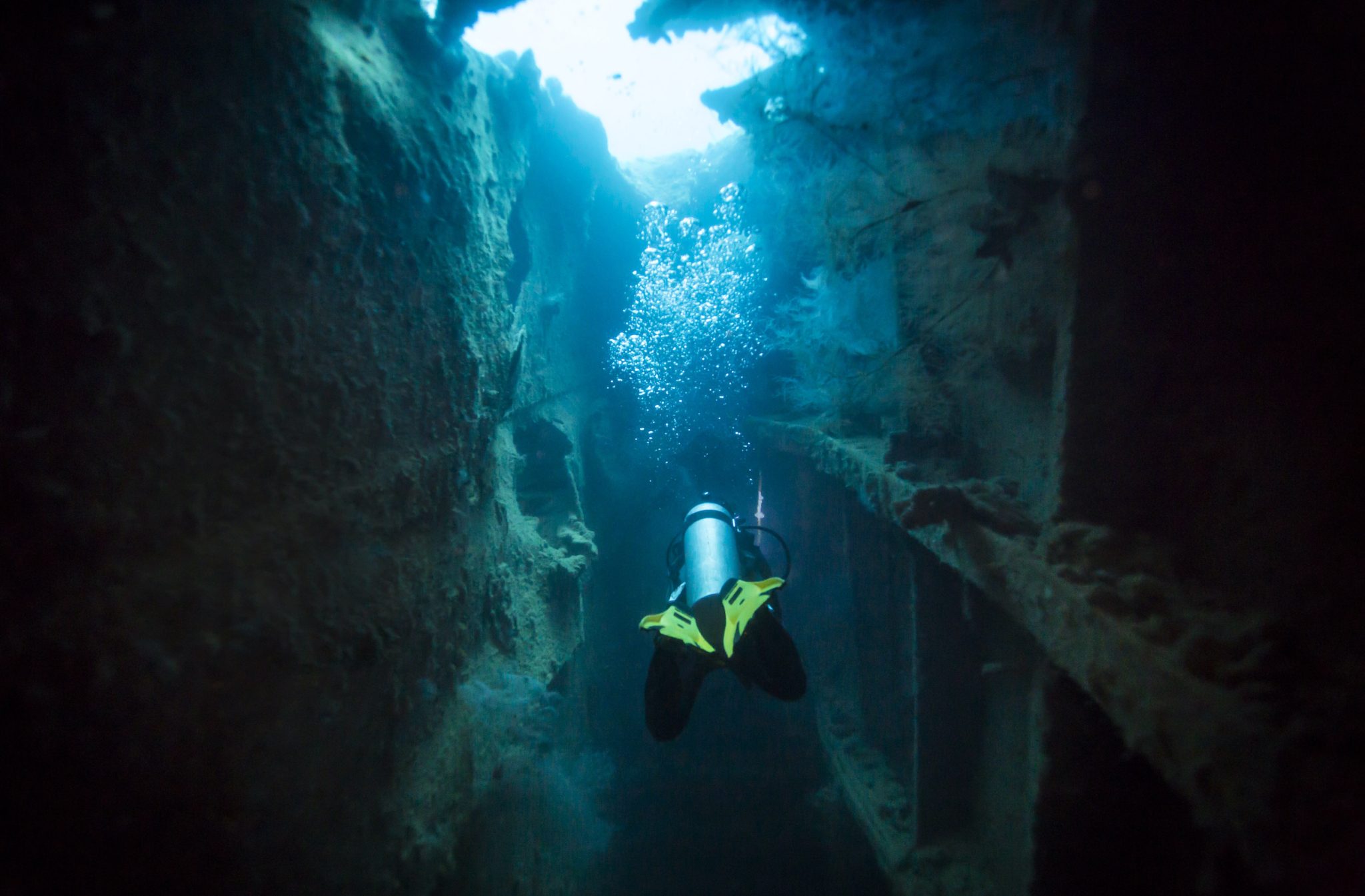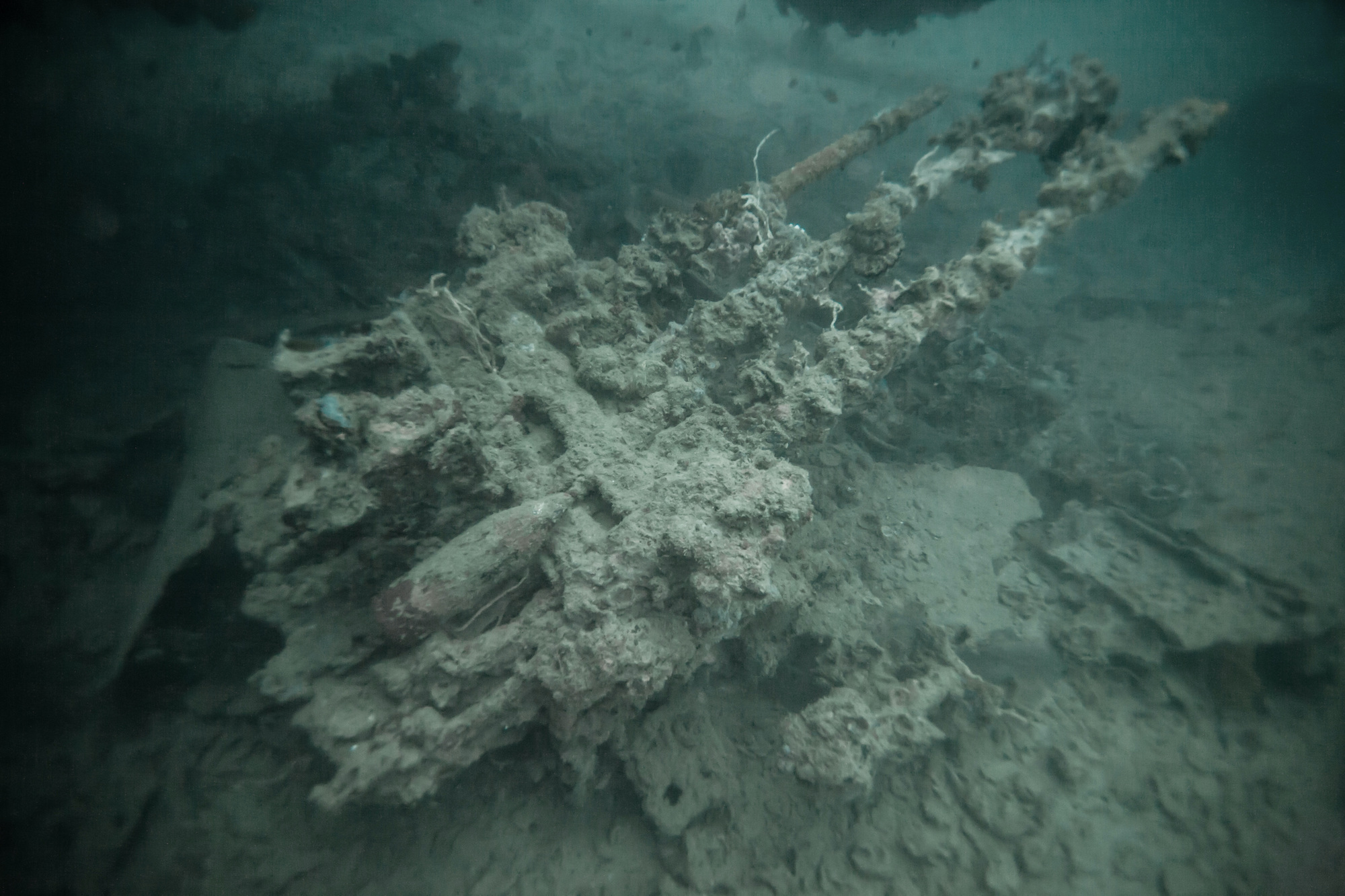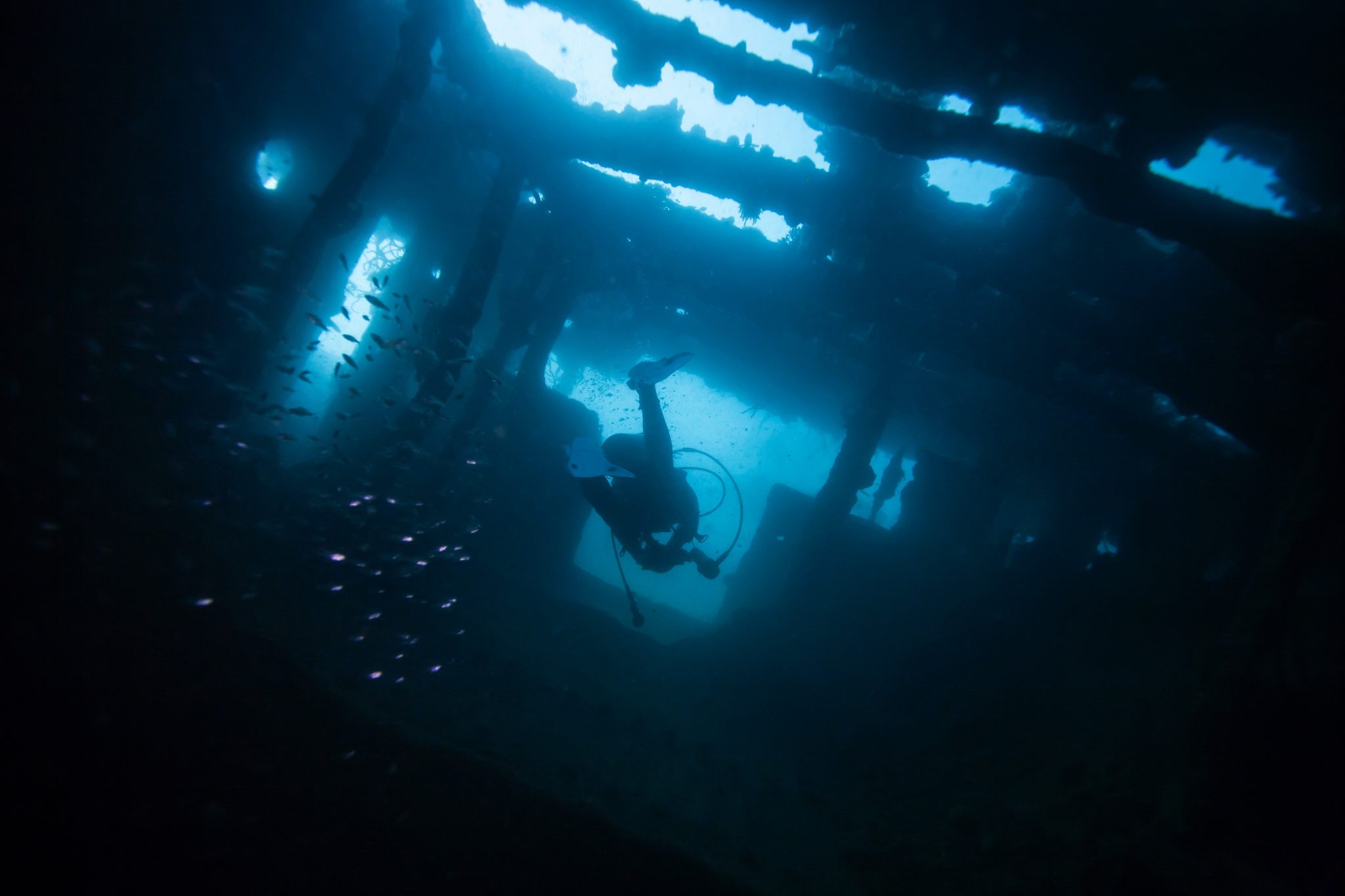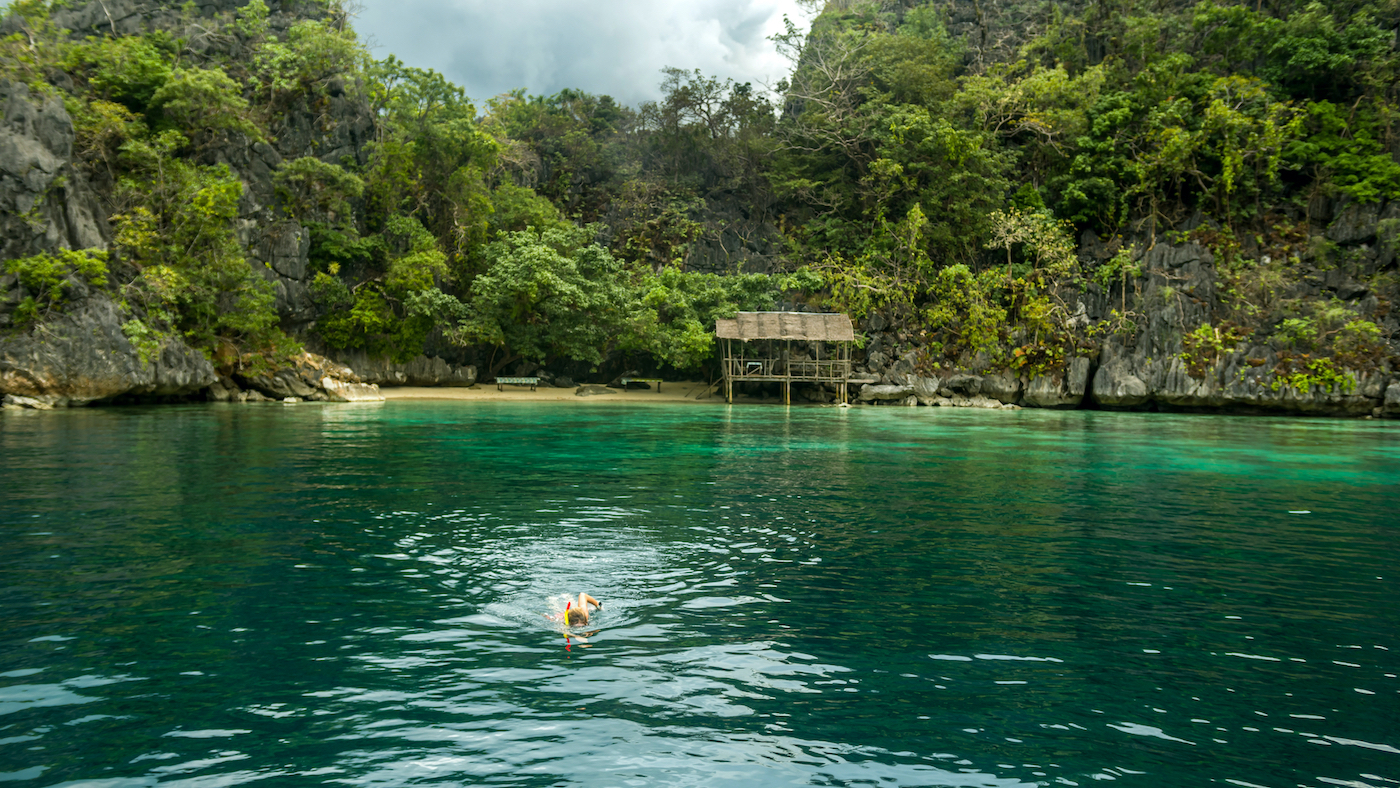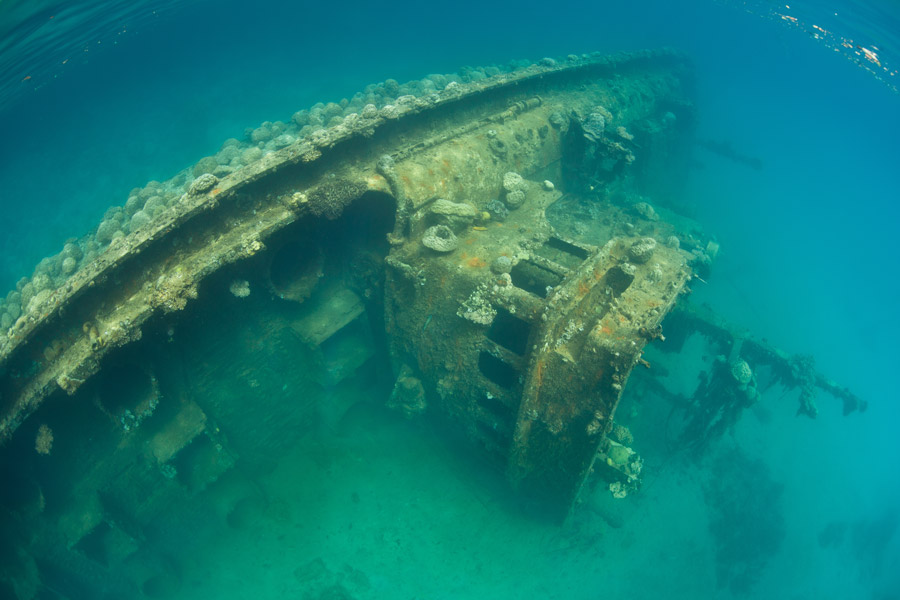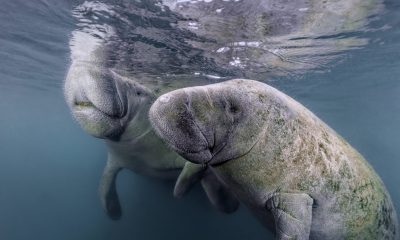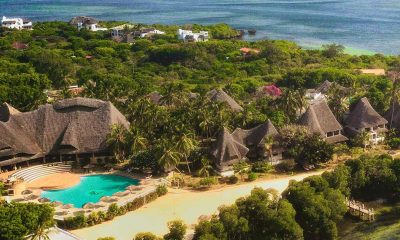News
Dive into History: Coron Bay’s WWII Wrecks

Guest Blog by Phil North
Phil North, from Dive Worldwide takes us on a journey through time to discover the wartime shipwrecks of Coron Bay.
Coron Bay, in the Philippines’ Palawan province, is known for having some of the best wreck diving in the world.
Divers can discover famous Japanese vessels from World War II, along with fascinating historical artefacts, guns and ammunition that have been eerily preserved through time. The sheer number of sunken ships in such a condensed area is a major draw for wreck enthusiasts, but the Philippines islands have also been at the epicentre of major events that have shaped global history.
A Snaphot of the Philippines’ Maritime History
‘The Philippines’ was so named in the 16th century, when Portuguese explorer Ferdinand Magellan claimed the islands for King Phillip II of Spain. Magellan was killed in battle by a local chief, but the eighteen surviving members of his crew became the first people to circumnavigate the globe! For three hundred years, the Philippines remained colonised by the Spanish, until eventually the Americans won the territory in 1898.
The Japanese occupied the islands during World War Two – this fateful strategic move was motivated by disputes between the US and Japan over control of the Pacific and South East Asia. The 1941 Japanese invasion occurred just ten hours before the Pearl Harbour attacks, precipitating one of the most significant turning points in the war.
Shipwrecks! What happened in Coron Bay during WWII?
On 24 September 1944, the third airfleet of the US Navy strike force launched a surprise attack on the Japanese supply fleet, which was hiding in the islands around Coron Bay. Twenty-four Helldiver Bombers and ninety-six Hellcat Fighters destroyed twelve Japanese ships in a devastating attack that lasted less than twenty minutes.
Lost for decades at the bottom of the ocean, this fascinating moment in history is now exclusively experienced by scuba divers.
What’s it like to dive the Japanese wrecks?
Dive Worldwide’s team member and dive expert, Joanna Charter, reflects on personal experiences of diving in Coron Bay. Joanna has dived the Morazan, the Lusong Gunboat, Kogyo and the East Sangat wreck sites, and recommends diving during the half-moon, when the tides are at their weakest:
“Diving the wrecks of Coron was a delight. Most are penetrable. I remember that I was able to explore the engine room of the Morazan Maru and size myself up against the giant boilers, which now play home to many crustaceans.
The cargo holds of the Kogyo Maru are teaming with glassfish and the current that runs over the top has allowed a coral garden to form. The shallower East Sangat wreck is great to explore in the afternoon, after the deeper morning dives, and still gives you that metal fix. Although a lot has been salvaged, the size of the wrecks allows good and interesting access, well worth an adding to any wreck lover’s bucket list!”
Coron wrecks by dive level
Today, Coron Bay is considered one of the most outstanding wreck diving sites in South East Asia, with access to vast oil tankers, gun boats, sub chasers, cargo and supply vessels, and a seaplane carrier.
There are ten key Japanese shipwrecks for divers to discover: Teru Kaze Maru, Olympia Maru, Irako, Kogyo Maru, Morazan Maru, Lusong Gunboat, Akitsushima, Okikawa Maru, Nanshin Maru and Kyokuzan Maru – but we’ll look at a few of the highlights for each dive level.
Advanced divers
Irako is considered the jewel of the Coron wrecks. Here divers can access a well-preserved 125m long supply vessel, but with strong currents, challenging access points and depths of 33-42 metres, this site is not for beginners. Those who are qualified will be rewarded with access to cargo holds, engine rooms and an abundance of marine life inhabitants.
Akitsushima Maru is another site for experienced divers – this impressive 4.5 tonne warship was designed to carry seaplanes, but it was sunk by torpedo fire. AA-machine guns from the vessel can still be seen on the seabed.
Civilian oil tanker, Okikawa Maru, is the largest shipwreck in Coron Bay at 170m. Although the depths are quite shallow (12-25m), strong currents and low visibility may demand some diving skill.
Novice to Intermediate divers
Kogyo Maru is a relatively easy dive, with a maximum depth of 34m. The 135m Japanese freighter is on its side, and divers can easily access the cargo holds and witness anti-aircraft weapons covered in coral. The Kogyo Maru survived the 21 September 1944 attacks, but was sunk a few days later by US dive-bombers.
Olympia Maru, close to Sangat Island, is very accessible for both divers and snorkellers, with depths of just 3-19m. Here you can see an upright submarine-chaser, along with the chance of colourful mandarin fish and plenty of macro critters.
Another easy dive, albeit with some intermediate elements, is the Auxiliary supply ship Morazan Maru. This is one of the most popular wrecks in Coron for divers and underwater photographers alike, thanks to the stunning black coral-covered portholes, the exciting engine room, and the diverse resident marine life, such as barracudas, squid, sweetlips, groupers and scorpion fish. Experienced divers can discover the air pocket room or swim the full length of the ship!
“Morazan is a nice deep wreck with lots of swim-throughs. It was good to go inside at one end, then drift back along the top. The top of the wreck itself is covered in a garden of plate corals.” – Joanna Charter
Diving Trips in Coron Bay
Eager for your own piece of underwater history? Explore ships bejewelled with soft and black corals, and experience the strange incongruence of encountering schools of fish, critters and even turtles while swimming around 1940s wartime relics.
Dive Coron Bay
Experience up to 12 guided boat dives, exploring the most fascinating wrecks in Coron Bay. You stay at the eco-friendly Sangat Island Dive Resort, which is one of the area’s best kept secrets and has an on-site dive centre. You also have the opportunity to visit the popular dive sites of Cathedral Cove and Barracuda Lake, as well as the topside delights of the Calamian islands. Find out more…
Get Wrecked – Truk & Sangat
Combine two world-leading WWII Japanese shipwreck sites – Coron Bay in the Philippines (includes six dives) and Truk Lagoon in Micronesia (includes 12 dives). Resort and liveaboard accommodation options are available. Find out more…
 Get in touch with the friendly Dive Worldwide team for first-hand advice on your next diving holiday to the Philippines. They offer a superb range of resort and liveaboard options. Visit the website, send an enquiry, or call the expert team on 01962 302087.
Get in touch with the friendly Dive Worldwide team for first-hand advice on your next diving holiday to the Philippines. They offer a superb range of resort and liveaboard options. Visit the website, send an enquiry, or call the expert team on 01962 302087.
Blogs
DAN Introduces Continuing Education for Dive Professionals
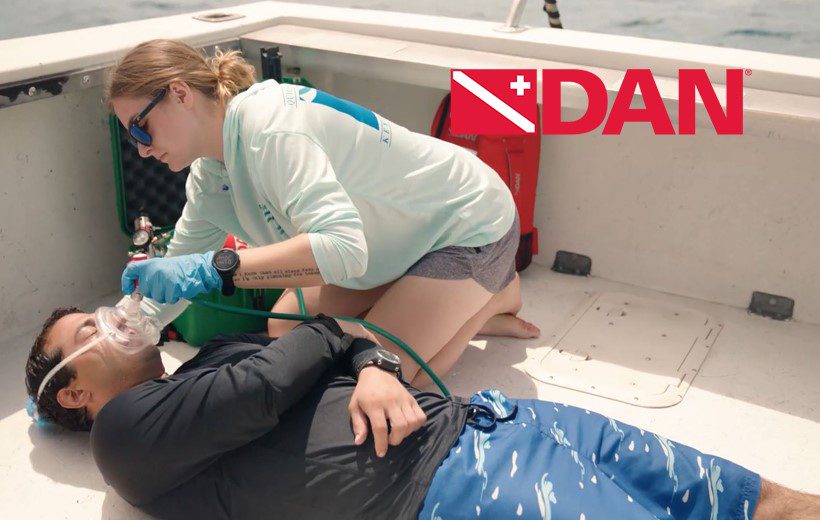
Divers Alert Network® (DAN®), the world’s leading dive safety organization, has launched a new program called Continuing Education for Dive Professionals. This free program focuses on risk mitigation and is now available to all dive professionals via DAN E-Learning. DAN expects this program will not only enhance divers’ safety but will also help reduce dive operators’ liability risk.
 To encourage participation, DAN is offering discounted premiums on individual professional liability and group professional liability insurance to all DAN members who complete the e-learning, which can be done in about an hour.
To encourage participation, DAN is offering discounted premiums on individual professional liability and group professional liability insurance to all DAN members who complete the e-learning, which can be done in about an hour.
Any DAN member who has completed the e-learning will be able to claim a discount of nearly 5% on their annual liability policy. This is in addition to the 5% discount that DAN members already receive. If you are on a group professional liability policy, your completion of the e-learning may count toward a discount on the group professional liability premium.
This year we partnered with Tec Clark to create the content of the program. In the future, we will combine Tec’s material with new material created by DAN.
Click here to learn more and access the e-learning.
To qualify for the discount, the e-learning must be completed before you renew your professional liability insurance policy. Refunds will not be given.
We hope you find this program educational and worthwhile. If you have any questions, or need assistance, please contact DAN at liabilityinsuance@dan.org.
Blogs
Heading out on the water this Summer? Watch for manatees
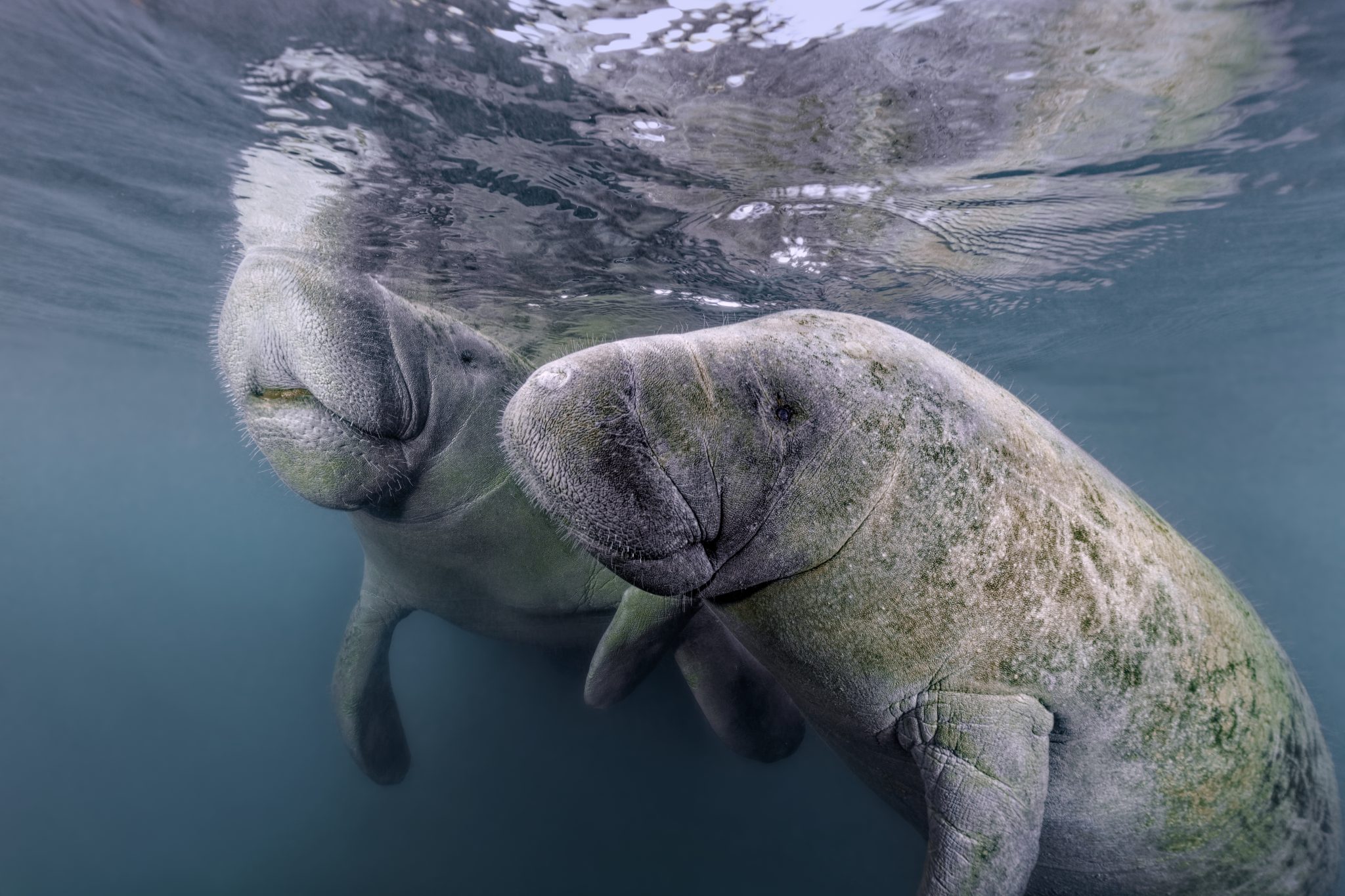
As National Safe Boating Week approaches, Save the Manatee® Club is urging boaters, and anyone that enjoys Florida’s waterways, to respect and protect the defenseless manatees that inhabit our shared waterways. From May 18 to 24, leading up to Memorial Day Weekend, the campaign aims to raise awareness about recreational boating safety and the importance of safeguarding imperiled manatees during the summer boating season. This week also emphasizes the importance of encouraging boaters to enroll in a boating safety course.
Manatees are semi-migratory marine mammals that are commonly found in shallow estuaries, bays, rivers, canals, and coastal areas throughout Florida and neighboring states. With some manatees venturing as far west as Texas and as far north as Massachusetts, collisions between these gentle giants and watercraft have become distressingly frequent. Boat propellers and high-speed collisions pose significant threats to manatees, often resulting in severe injuries or even death.
Save the Manatee Club is calling on all water enthusiasts to follow essential manatee safety tips to ensure the well-being of the imperiled manatee:
- Obey Speed Zone Signs: Familiarize yourself with and adhere to posted speed limits to prevent collisions with manatees.
- Reduce Glare with Polarized Sunglasses: Wear polarized sunglasses to enhance visibility and spot manatees below the water’s surface.
- Recognize Manatee Signs: Learn to identify signs of manatees in the area, such as swirls or flat spots on the water caused by their movements.
- Respect Manatee Sanctuaries: Keep a safe distance from posted manatee sanctuaries and avoid pursuing or harassing these marine mammals, as it is illegal and can disrupt their natural behaviors.
- Report Distressed Manatees: In Florida, promptly report distressed, injured, tagged, or orphaned manatees to the Florida Fish and Wildlife Conservation Commission (FWC) at 1-888-404-FWCC (3922). Outside of Florida, report sightings to the appropriate state agency or rescue organization. A list of agencies to contact is available at savethemanatee.org/report.
- Protect Seagrass Beds: Avoid boating over seagrass beds and shallow areas where manatees may be feeding. Stick to deep water channels while remaining vigilant, as manatees also utilize these channels during their travels.
- Dispose of Fishing Line Responsibly: Anglers should properly dispose of or recycle used fishing line to prevent entanglement hazards for manatees.
“Each year, National Safe Boating Week provides an excellent reminder for all of us to be aware that we share our waterways with vulnerable manatees,” emphasized Patrick Rose, Aquatic Biologist and Executive Director of Save the Manatee Club. “With the recent Unusual Mortality Event on Florida’s East Coast claiming an alarming number of manatees’ lives, it is more crucial than ever to prevent preventable deaths caused by watercraft collisions. By following manatee-safe boating guidelines, such as obeying speed zones and remaining vigilant for manatees, everyone on the water can contribute to the protection of these gentle giants.”
Save the Manatee Club offers a range of free materials to help safeguard manatees and raise awareness about manatee-safe boating practices. Shoreline property owners and park or marina managers can order aluminum dock signs to alert others about the presence of manatees in their areas. Boaters and paddlers can request packets containing a safety tips card, a waterproof boat banner, and a decal to display on their vessels, providing the number to report manatees in distress. To view and request these materials, visit savethemanatee.org/resources. Save the Manatee Club will also be hosting a live webinar for National Safe Boating Week on Tuesday, May 21st at 6pm EST. To register, visit savethemanatee.org/register.
-

 Marine Life & Conservation Blogs3 months ago
Marine Life & Conservation Blogs3 months agoCreature Feature: Swell Sharks
-

 Gear Reviews4 weeks ago
Gear Reviews4 weeks agoGEAR REVIEW – Revolutionising Diving Comfort: The Sharkskin T2 Chillproof Suit
-

 Blogs2 months ago
Blogs2 months agoMurex Resorts: Passport to Paradise!
-

 Blogs3 months ago
Blogs3 months agoDiver Discovering Whale Skeletons Beneath Ice Judged World’s Best Underwater Photograph
-

 News3 months ago
News3 months agoPADI Teams Up with Wellness Brand Neuro to Drive Ocean Change and Create a Blue State of Mind
-

 Marine Life & Conservation2 months ago
Marine Life & Conservation2 months agoSave the Manatee Club launches brand new webcams at Silver Springs State Park, Florida
-

 Blogs2 months ago
Blogs2 months agoSeagrass Awareness Month brings critical food source for Manatees to centre stage
-
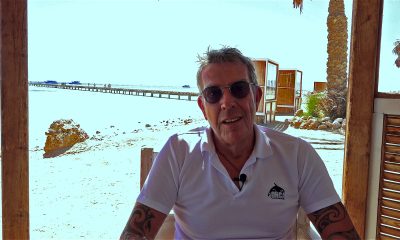
 Blogs1 month ago
Blogs1 month agoSOMABAY: Scubaverse interviews Wolfgang Clausen, General Manager, ORCA Dive Clubs


